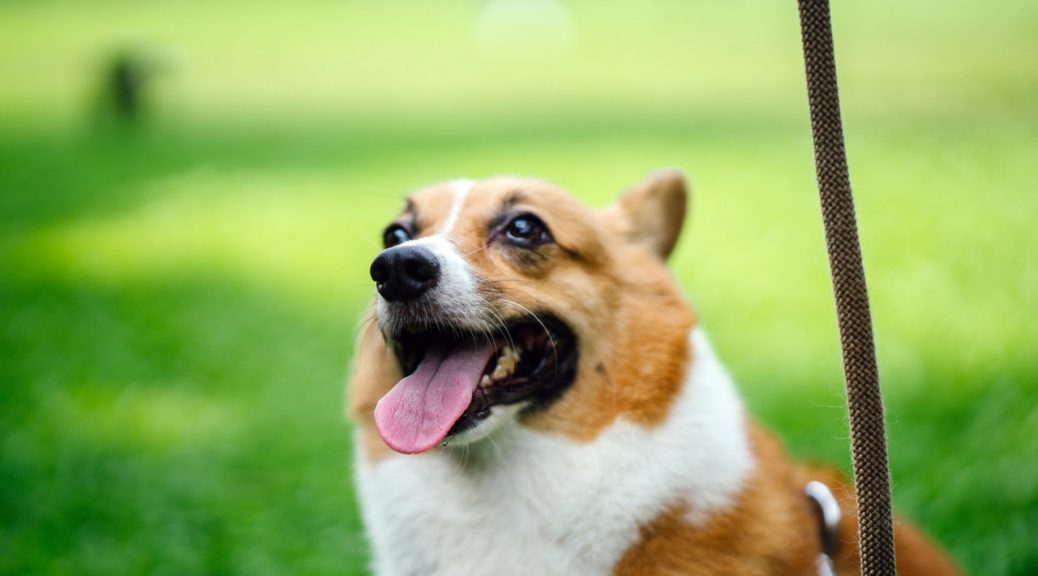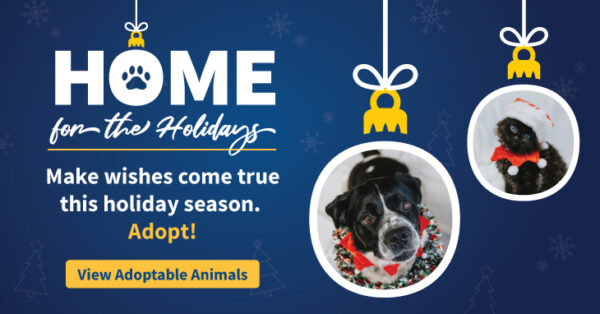Beginner’s guide to dog park etiquette
by Ontario SPCA and Humane Society | Dog Care | April 28, 2022

Daily trips to the dog park are a popular activity, particularly for urban dwellers with little access to open spaces. While dog parks vary greatly, a typical dog park is fenced and has separate, double-gated entry and exit points. If all users understand and follow the rules of the park, it can be a fun and social event for dogs and their humans alike. If etiquette isn’t followed, it can quickly spoil the dog park for everyone and create an unsafe environment.
Remember, not all dogs are appropriate for dog parks, or enjoy playing with others. Your dog should be at least six months old, in good health, fully vaccinated, enjoy the company of most other dogs, and be responsive to basic cues, such as “come,” “sit,” and “leave it,” so you can safely get their attention, if necessary. Ideally, dogs should be spayed or neutered to reduce the likelihood of fights and prevent unwanted pregnancies. Puppies not fully immunized yet are at a higher risk for contracting diseases, and puppies under six months old are very vulnerable to being traumatized by another dog’s inappropriate behaviour.
Your first few visits
Visit the park without your dog to observe the interactions between dogs and humans and to familiarize yourself with bylaws and posted rules (typically posted at the perimeter). Do the dogs appear friendly? Are the humans cooperative? If satisfied, arrange to take your dog to the park the first few times during non-peak hours (mornings, weekday evenings and weekends are usually busiest). Always observe the other dogs at play before entering the gate. Only enter if the other dogs look like they are appropriate playmates. If there are designated areas for small and big dogs, use them accordingly; these are provided for their safety and comfort.
What you need
Bring water and plenty of poop bags. Leave your toys at home. Regardless of your dog’s reaction to toys, other dogs may have issues with guarding behaviour. Your dog should be wearing a flat buckle collar and remain leashed until safely in the park. Remove your dog’s leash as soon as you enter the off-leash area. Mixing on-leash and off-leash dogs can cause stress in the leashed dogs, which may lead to aggression.
Help keep your dog from getting overly excited and out of control by frequently (and briefly) interrupting the play to ask for a sit etc., then reward with a yummy treat. You may also use play with other dogs as a reward for quick sits by releasing the dog with the request “Go play!” Dog parks are an excellent place to work on some basic cues with distractions. Be prepared for other dogs to pester you for treats. Do not feed someone else’s dog without permission from their caregiver. Be aware that you may need to quickly conceal your treats from some exploring noses!
How to keep play fun and safe
While many people at dog parks socialize as much as their dogs, it’s important that playing dogs are monitored closely at all times for their own safety. If you are in the park and see new visitors arrive, discourage your dog from “rushing” the new dog at the gate. Call your dog to you and give him a pet before sending him off to greet the newcomers. Understand your dog’s body language and watch for signs of stress, which indicate that he has had enough. Yawning, licking, turning away or turning of the head, laying down, freezing in place, and walking slowly may be some indicators that he wants a break.
If your dog is bullying, or is being bullied, leave the park. Bullying may occur when one dog (or a group of dogs) is persistently pursuing another dog. Chasing left uninterrupted can also turn into predatory behaviour – so interrupt it frequently to give the dogs a “time out.” If you’re unsure if the other dog is enjoying your dog’s attentions, lead your dog away by the collar five steps and then watch. If the dog follows, then the play is appropriate and reciprocal. If you’re unsure of your dog’s enjoyment, ask the other dog’s caregiver to lead his or her dog away. Always respect the feelings of other dog park users.
If you bring children with you, please supervise them at all times. Young children are not recommended. Children should not race around, wave toys and sticks, yell, scream or approach dogs that they don’t know.
Used appropriately, dog parks are a great way for dogs and their people to have fun and make new friends. By following the rules of the park, being considerate of other people and dogs, and closely supervising your own dog, you will contribute to the safe and inviting atmosphere many parks enjoy. Happy playing!
Categories
Testimonial
Speaking for the ones who can’t speak for themselves
Keep up the good work speaking for the ones who can’t speak for themselves. A society who cares for their animals is a better society. Thanks for your good work!
